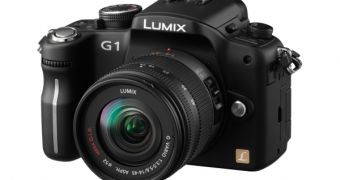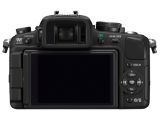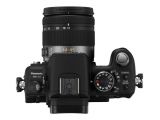For the past fifty years or so, photo camera viewfinders have been optical-only systems. However, times have changed, and one of the most important innovations in this field has just been announced by Panasonic, namely the DMC-G1, which, according to the company, is the world's first interchangeable-lens camera to use the Micro Four Thirds System, as well as the world's first to feature a Full-time Live View Finder.
Introduced earlier this year, as a result of a collaboration between Panasonic and Olympus, the new Micro Four Thirds standard for interchangeable lens cameras introduces approximately 50% shorter flangeback distance (mount-to-sensor distance), 6mm smaller lens mount outer diameter, and a number of 11 electrical contacts in the mount, compared to the previous 9 contacts. The Micro Four Thirds System makes it possible to downsize not only the camera body, but the lenses too, and this applied particularly to wide-angle lenses and high-power zoom lenses.
The core of the Lumix G1 is represented by the 4/3-type 12.1-megapixel Live MOS sensor, which features a high dynamic range and allows photographers to benefit from the advantages provided by the Full-time Live View, both when viewing the Free-Angle LCD and when looking through the viewfinder. Moreover, for fast and accurate image processing, the device has also been equipped with Panasonic's new Venus Engine HD imaging system.
The camera sports a built-in eye sensor that automatically switches on the viewfinder when the user looks into it, then switches it off and turns on the 3.0-inch high-resolution 460,000-dot LCD when the user looks away from the viewfinder. Similar to the optical viewfinders from high-end digital cameras, the Live View Finder has a 1.4x (0.7x on 35mm equiv.) magnification and a 100% field of view, while displaying images at an impressive 60-frames-per-second.
For this reason, it's rather inappropriate to call the G1 a “digital single-lens reflex camera”, and even the manufacturer claims that this product is actually a whole new species, different from “classical” DSLRs.
Like other Lumix products, the G1 also sports the contrast AF system, which offers users such features as the 1-area-focusing, AF Tracking, and a preview function that shows the photographer how changing the shutter speed (and other settings) will affect the photograph. Moreover, the G1 also boasts an iA (Intelligent Auto) mode, which brings together such features as AF Tracking , Face Detection, Intelligent ISO Control and Intelligent Exposure in order to allow users to take very good quality shots on every occasion.
Because dust entering the body is a concern with all interchangeable lens cameras, Panasonic has equipped the G1 with a Supersonic Wave Filter as part of a Dust Reduction System designed to prevent dust and other foreign matter from adhering to the image sensor.
It's also very important to mention the fact that, besides being fully compatible with Micro Four Thirds lenses, the G1 can be fitted with a mount adapter that allows the use of standard Four Thirds lenses. In this way, users are offered a wide range of choices as far as lenses are concerned, and they'll still be able to use the lenses they've already purchased for their previous camera bodies.
Unfortunately, no pricing details are available for the time being, but we'll most likely be able to find that out pretty soon, since this thing is slated to arrive in stores at some point in early November.

 14 DAY TRIAL //
14 DAY TRIAL // 


